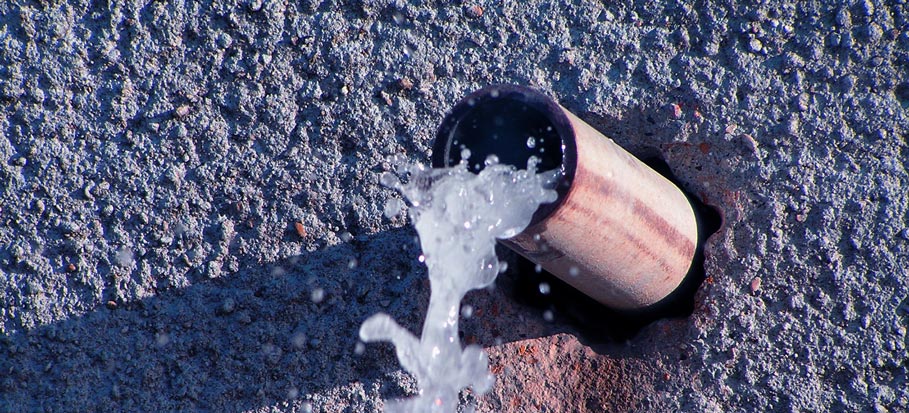6 Ways to Locate Concealed Water Leakages in Your Home
6 Ways to Locate Concealed Water Leakages in Your Home
Blog Article
What are your concepts on Detecting hidden plumbing leaks?

Early discovery of leaking water lines can alleviate a possible catastrophe. Some small water leakages may not be noticeable.
1. Check Out the Water Meter
Inspecting it is a guaranteed method that helps you discover leaks. If it moves, that suggests a fast-moving leak. This implies you may have a slow leak that could also be below ground.
2. Examine Water Usage
Examine your water expenses and track your water intake. As the one paying it, you ought to notice if there are any kind of discrepancies. If you detect sudden changes, in spite of your consumption being the same, it means that you have leakages in your plumbing system. Remember, your water expense must drop under the exact same array monthly. An unexpected spike in your costs indicates a fast-moving leak.
A stable boost every month, even with the exact same practices, shows you have a slow-moving leak that's likewise slowly escalating. Call a plumber to extensively inspect your home, especially if you really feel a cozy location on your floor with piping underneath.
3. Do a Food Coloring Test
30% comes from toilets when it comes to water intake. Test to see if they are running appropriately. Drop flecks of food shade in the container and also wait 10 mins. There's a leak between the container and also dish if the shade in some way infiltrates your dish during that time without flushing.
4. Asses Exterior Lines
Don't forget to check your outdoor water lines also. Examination spigots by attaching a yard tube. Must water seep out of the link, you have a loose rubber gasket. Replace this and also make certain all connections are limited. If you have actually got a lawn sprinkler, it will certainly assist get it professionally examined and also preserved annually. One small leakage can squander tons of water and increase your water costs.
5. Examine the circumstance and evaluate
Property owners need to make it a routine to check under the sink counters and even inside closets for any type of bad odor or mold growth. These two warnings suggest a leakage so timely attention is needed. Doing routine inspections, even bi-annually, can conserve you from a major issue.
A lot more importantly, if you know your residence is currently old, maintain a watchful eye on your heating systems, hoses, pipes etc. Check for stainings and also deteriorating as many pipes and also home appliances have a life span. They will likewise normally weaken because of wear and tear. If you suspect dripping water lines in your plumbing system, don't await it to escalate. Call a specialist plumber immediately so you do not wind up with a terrible mess in your home.
Early detection of leaking water lines can mitigate a potential calamity. Some small water leakages may not be noticeable. Checking it is a surefire means that assists you discover leaks. One little leakage can throw away heaps of water and surge your water bill.
If you think dripping water lines in your plumbing system, do not wait for it to intensify.
How to Know If Your Home Has a Hidden Leak
Water Meter Reveals Inexplicable Water Usage
If you’d like to test whether or not there’s a leak somewhere in your home, you can do this using your water meter. Here is how to conduct the test:
Don’t use any water in your home for at least 30 minutes; this also means not turning on faucets or water-using appliances.
Go outside, and check your water meter for activity.
If your water meter shows that there was activity, even though no one was using any water, this proves that there is a leak in your home.Visible Mold or Mildew Growth
Leaks behind walls create moist, dark environments that allow mold and mildew to grow and thrive. Eventually, you might see mold growth forming on the wall closest to a hidden leak.
If mold is growing in an area that receives a high amount of moisture, such as a bathroom, it may simply be an indication that better ventilation is needed. However, if you see mold growth on a wall or the ceiling in an area where you would not expect, you probably have a hidden leak.
Musty, Mildew Odor
Sometimes you might not be able to see the mold or mildew that is growing as a result of a leak. However, the smell can give the problem away just as easily. If you catch a whiff of something musty, there’s a good chance that old water is collecting somewhere in your home that you can’t see.
Stained/Warped Walls, Ceilings, or Floors
When your home soaks up water, a variety of red flags can become visible, including ceiling stains, bubbling drywall, warped walls, and sagging floors. While these issues can be caused by excess humidity, they can also be signs that a pipe or plumbing connection has started leaking behind your walls.
Inexplicably High Water Bill
After a while, you get a general sense for what your water bill should be. If you own a pool or sprinkler system, your bill will tend to be higher during summer. However, if you receive a water bill that seems especially high, and you can’t figure out what caused it, then you may have a hidden leak somewhere that’s increasing your bill.
https://www.plumbingjoint.com/blog/2019/july/how-to-know-if-your-home-has-a-hidden-leak/

As an enthusiastic person who reads on Finding hidden leaks, I thought sharing that chunk was valuable. Do you know somebody who is fascinated about the niche? Do not hesitate to share it. We value reading our article about Finding hidden leaks.
Report this page